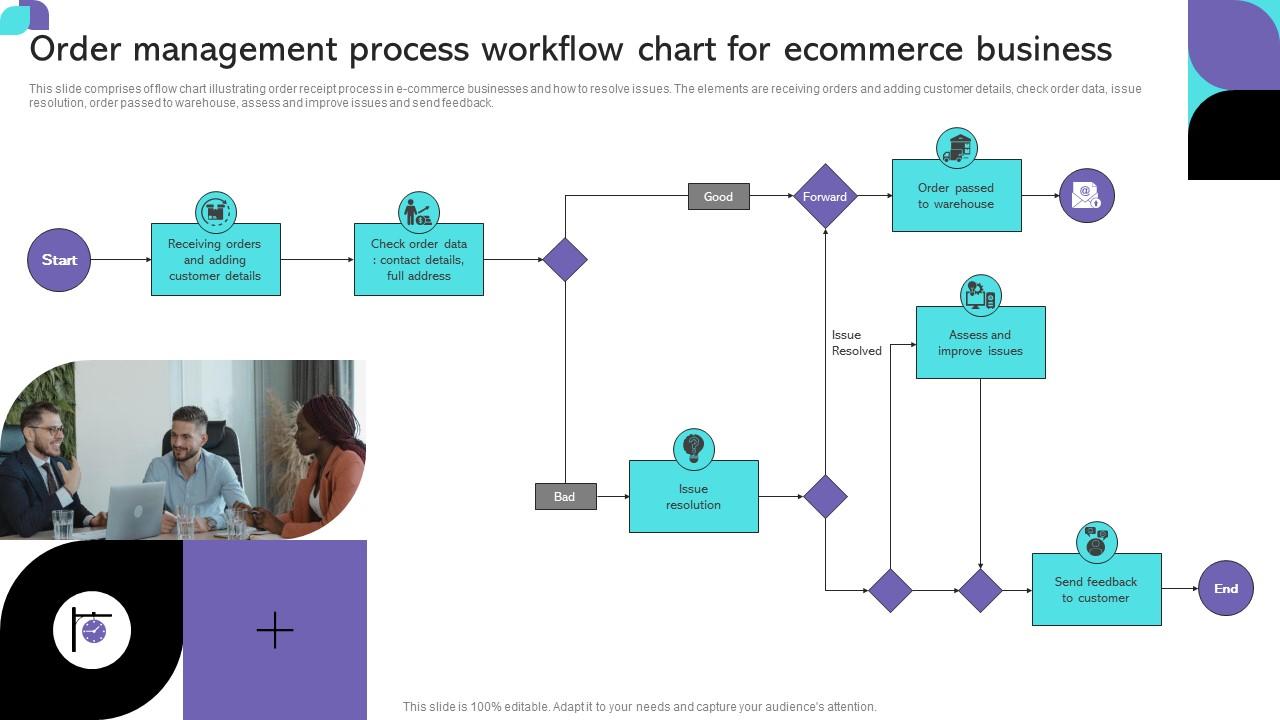ERP with order management revolutionizes how businesses handle their processes, enhancing efficiency and organization. From centralized order management to seamless integration with inventory control, this topic delves into the core aspects of ERP systems.
Exploring the key features, benefits, and implementation strategies, this discussion offers valuable insights for businesses looking to optimize their order management procedures through ERP solutions.
Introduction to ERP with Order Management
Enterprise Resource Planning (ERP) is a software system that integrates various business functions and processes into a single platform, allowing organizations to manage and automate activities such as accounting, human resources, inventory management, and more.
Order management is a critical component within an ERP system, as it involves the process of receiving, tracking, and fulfilling customer orders efficiently. It encompasses activities such as order entry, order processing, inventory management, and shipment tracking.
Streamlining Order Processing
ERP systems streamline order processing by centralizing all order-related information in one place, eliminating the need for manual data entry across multiple systems. This integration enhances visibility and control over the entire order lifecycle, from order placement to fulfillment and delivery.
Features of ERP Order Management
Order management is a critical component of ERP systems, streamlining the process of handling customer orders from start to finish. Let’s delve into the key features of ERP systems with order management functionality.
Order Tracking and Fulfillment
ERP systems offer robust order tracking capabilities, allowing businesses to monitor the status of each order in real-time. From order creation to shipment and delivery, ERP systems provide visibility into every stage of the order fulfillment process. This helps businesses ensure timely delivery and customer satisfaction.
Integration of Order Management with Inventory Control
One of the key advantages of ERP systems is the seamless integration of order management with inventory control. By centralizing order and inventory data, ERP systems enable businesses to optimize stock levels, prevent stockouts, and improve order accuracy. This integration also facilitates efficient order processing, as inventory levels are automatically updated as orders are placed and fulfilled.
Benefits of Using ERP for Order Management
Centralized Order Management:
Having a centralized order management system in ERP allows businesses to streamline their processes and have a comprehensive view of all orders in one place. This leads to better coordination between different departments, reduces the chances of errors, and improves overall efficiency.
Improved Order Processing Accuracy:
ERP systems are equipped with tools and features that help in automating order processing tasks, reducing manual errors significantly. By eliminating the need for manual data entry and ensuring real-time updates across the system, ERP enhances the accuracy of order processing, leading to a higher level of customer satisfaction.
Cost Savings through Efficient Order Management:
Efficient order management in ERP contributes to cost savings for businesses in various ways. By optimizing inventory levels, reducing lead times, and minimizing order processing errors, companies can lower operational costs and improve their bottom line. Additionally, the automation of repetitive tasks in order management allows employees to focus on more strategic activities, further increasing productivity and reducing operational expenses.
Implementation of ERP with Order Management
Integrating an ERP system with order management is a crucial step for streamlining business operations. Below are the steps for successful integration and tips for optimizing order management processes through ERP.
Steps for Successful Integration
- Define clear objectives and requirements for the ERP system and order management integration.
- Choose an ERP system that aligns with your business needs and integrates well with order management functionalities.
- Assign a dedicated team to oversee the implementation process and provide necessary training to employees.
- Migrate data accurately from existing systems to the new ERP platform to ensure seamless transition.
- Test the integrated system thoroughly to identify and resolve any issues before full deployment.
Common Challenges during ERP Implementation
- Lack of proper training for employees on how to use the new system effectively.
- Data migration errors leading to inconsistencies in order management processes.
- Resistance to change from employees accustomed to old systems and processes.
- Integration complexities between ERP modules and order management functionalities.
Tips for Optimizing Order Management Processes
- Regularly update and maintain data in the ERP system to ensure accuracy in order processing.
- Utilize automation features within the ERP system to streamline order fulfillment and reduce manual errors.
- Monitor key performance indicators related to order management to identify areas for improvement.
- Implement customer relationship management tools within the ERP system to enhance customer satisfaction and loyalty.
Epilogue
In conclusion, ERP with order management emerges as a powerful tool for businesses seeking to enhance their operational efficiency and accuracy. By centralizing order management and integrating seamlessly with inventory control, ERP systems pave the way for streamlined processes and cost savings.
